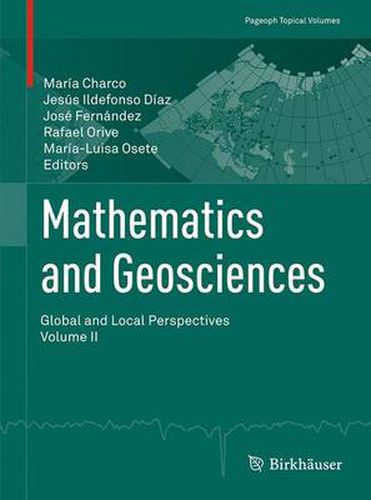Readings Newsletter
Become a Readings Member to make your shopping experience even easier.
Sign in or sign up for free!
You’re not far away from qualifying for FREE standard shipping within Australia
You’ve qualified for FREE standard shipping within Australia
The cart is loading…






This is the second volume of the topical issue Mathematics and Geosciences: Global and Local Perspectives which embraces 21 papers on different topics relating to Mathematics and Geosciences. They address different topics under both global and local perspectives, such as a method for calculating probabilities for large events in systems such as earthquakes, typhoons, etc.; the use of the Laplace-Fourier-domain full waveform inversion technique to deep-sea seismic data; discrete element modeling; step-edge detection filters, study of a transition zone of the Narmada-Son lineament; integral formulae for recovering the sub-crustal stress from terrestrial gravimetric data; numerical simulations of earthquake fault systems and their use to estimate gravity changes; application of Gaussian clustering to joint interpretation of seismic and magnetotelluric data; on the reliability and fidelity of archaeomagnetic and volcanic records to recover the past evolution of the Earth’s magnetic field; the study, for the first time, of variations in absolute surface geostrophic currents (SGC) using satellite data only; discussion of the inconsistency of IAU2000 non-rigid earth nutation model; the study of nonlinear anisotropic diffusive filtering applied to the oceans MDT; the numerical solution of a nonhydrostatic ocean model; Hydrological-Hydraulic models; Steiner rearrangement of a function to study the effectiveness of chemical reactors for the treatment of wastewaters; GNSS software; the study of the fractal dimensions for the identification of bedrock lithology; the study of the Uruk archaeological site (southern Iraq) by integrated geophysical methods; mathematical model for patchy landscapes; study of pore space soil structure; and the results of comparison between transverse electric-type fields and between transverse magnetic and transverse electromagnetic fields.
As the previous one, volume II addresses the interest of scientists of many of the branches in Earth Sciences as well as postgraduate students, covering both approaches, applied and theoretical ones, to solve many different problems in Geosciences with the help of mathematical models and methods.
$9.00 standard shipping within Australia
FREE standard shipping within Australia for orders over $100.00
Express & International shipping calculated at checkout
This is the second volume of the topical issue Mathematics and Geosciences: Global and Local Perspectives which embraces 21 papers on different topics relating to Mathematics and Geosciences. They address different topics under both global and local perspectives, such as a method for calculating probabilities for large events in systems such as earthquakes, typhoons, etc.; the use of the Laplace-Fourier-domain full waveform inversion technique to deep-sea seismic data; discrete element modeling; step-edge detection filters, study of a transition zone of the Narmada-Son lineament; integral formulae for recovering the sub-crustal stress from terrestrial gravimetric data; numerical simulations of earthquake fault systems and their use to estimate gravity changes; application of Gaussian clustering to joint interpretation of seismic and magnetotelluric data; on the reliability and fidelity of archaeomagnetic and volcanic records to recover the past evolution of the Earth’s magnetic field; the study, for the first time, of variations in absolute surface geostrophic currents (SGC) using satellite data only; discussion of the inconsistency of IAU2000 non-rigid earth nutation model; the study of nonlinear anisotropic diffusive filtering applied to the oceans MDT; the numerical solution of a nonhydrostatic ocean model; Hydrological-Hydraulic models; Steiner rearrangement of a function to study the effectiveness of chemical reactors for the treatment of wastewaters; GNSS software; the study of the fractal dimensions for the identification of bedrock lithology; the study of the Uruk archaeological site (southern Iraq) by integrated geophysical methods; mathematical model for patchy landscapes; study of pore space soil structure; and the results of comparison between transverse electric-type fields and between transverse magnetic and transverse electromagnetic fields.
As the previous one, volume II addresses the interest of scientists of many of the branches in Earth Sciences as well as postgraduate students, covering both approaches, applied and theoretical ones, to solve many different problems in Geosciences with the help of mathematical models and methods.